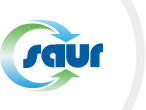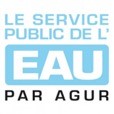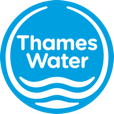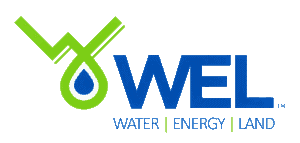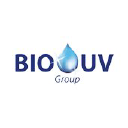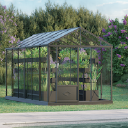Summary
The global water treatment market is on a strong growth trajectory, having been valued at $145 billion with projections to reach $211 billion by 2025, according to Market Research Expertz. This growth is driven by an increased need for clean water, rapid population growth, urbanization, growing awareness of water quality and public health, the prevalence of water-borne diseases, rising industrial demand and stringent government regulations on wastewater treatment. Population growth, urbanization and industrial development are catalyzing demand, while technological advances and regulatory frameworks are fostering sustainable and efficient water management practices. The French water treatment market, in particular, is stable with modest growth.
France's consumption pattern is evolving; domestic consumption is declining despite population growth, with an emphasis on water conservation and the use of more efficient equipment. Water consumption by agriculture and industry varies, as agriculture is strongly influenced by seasonal rainfall. The market is highly structured, with major players such as Veolia and Suez leading the way, and innovations in the recycling of treated water and sewage sludge indicating a trend towards circular economies.
Changing trends in French water treatment demand
In France, the water treatment market is largely influenced by three main uses: domestic, agricultural and industrial, with each sector displaying distinct water use trends. Although the French population is growing, it is interesting to note that domestic water consumption has followed a downward trajectory, suggesting increased efficiency and greater environmental awareness among consumers. This decline is mirrored in the agriculture and industry (excluding energy) sectors, although consumption in the latter remained stable. The domestic sector, which includes households, municipalities and tertiary activities, does not appear to be experiencing increased demand for water treatment.
Average water consumption per person per day is between 160 and 180 liters, in line with European standards but well below the figures for countries such as the USA. It should be noted, however, that water consumption varies considerably from one region of France to another, with factors such as climate, tourism and the proportion of second homes having a significant influence on these figures.
The industrial sector, which accounts for 16% of water volumes abstracted in France, mainly serves the chemical industry, which leads the way in water consumption. However, production trends suggest a gradual growth in production followed by a recent plateau, indicating a potential shift in industrial demand for water treatment services that could be affected by various economic pressures.
Agricultural water demand is the most volatile, as it is highly dependent on seasonal and annual rainfall. While the total agricultural area used has stabilized after a period of decline, water use for irrigation can fluctuate considerably, particularly during periods of low rainfall, which can lead to state-imposed water restrictions. Financially, the water treatment sector is largely state-supported, with households and businesses together accounting for two-thirds of total funding for management services.
Investments by delegated water companies, excluding research and development, fluctuate between 750 and 800 million euros, mainly allocated to the crucial transport and distribution infrastructure. In summary, the French water treatment market is characterized by declining domestic water consumption, relatively stable but possibly declining industrial demand, and highly variable agricultural demand. These trends are key to shaping demand analysis in the sector, with key players and regulatory frameworks evolving in line with these changes
In France, the water treatment market is shaped by a number of key players who not only cover a wide range of services, but also play a fundamental role in the development of the industry. Each company, with its specialized expertise and strategic operations, contributes to the stability and growth of the country's water treatment ecosystem. Here, we take a look at the main entities that stand out for their influential presence.
- Veolia is widely regarded as a global giant in the sector, extending its services well beyond France's borders. An emblem of excellence in water management, Veolia offers innovative solutions in water capture, purification and distribution. The company is also heavily invested in the sustainable treatment and reuse of wastewater, aligning itself with today's pressing environmental concerns.
- Suez is another formidable name, also known for its long-standing contributions to water and waste management. A solid player in the market, Suez offers a comprehensive range of services designed to meet the requirements of both the public and private sectors. Its water treatment processes are essential for ensuring clean water supplies and maintaining hygiene and health standards throughout the country.
- Saur, while not the size of Veolia and Suez, is nevertheless a key player, with a focused approach to meeting the water needs of communities and industry. Its operations have a significant impact on the overall structure of the French water treatment market, with a focus on providing quality service to a wide range of customers.
- SCP (Société du Canal de Provence), although less well known than the market leaders, has a niche but significant presence in the market, particularly in the Provence region. It specializes in water resource management, ensuring efficient distribution for domestic and agricultural uses.
- Sogedo is another key figure on the French water treatment scene, providing tailor-made water services mainly to rural and semi-urban areas.
Together, these players represent the backbone of the French water treatment market, each bringing unique strengths and specializations to the table. Their positioning and strategies reflect not only their dominant market positions, but also their commitment to meeting the diverse needs of a country that places great importance on its water resources. With a collective vision of sustainable management and innovative treatment, these companies are paving the way for a future where clean water remains accessible and environmentally-friendly practices are the norm.
to understand this market
Detailed content
 Inforamtion
Inforamtion
- Number of pages : 30 pages
- Format : Digital and PDF versions
- Last update : 07/08/2023
 Summary and extracts
Summary and extracts
1 Market overview
1.1 Definition of the water treatment market
The water treatment market encompasses all activities aimed at harvest, distribute, allow use, but also to recovering waste water, purifying it and finally discharging it in the natural environment, or put them back into circulation for human use
The market players are local authorities, delegated private operators, public operators, framing bodies, pipefitters, equipment manufacturers and construction and engineering companies.
The French market is experiencing a true stability with a slight increase of 1.01% over the year 2019. Water consumption in France can be broken down into three uses:
- Domestic use (household, office and tertiary sector consumption) ;
- Agricultural use (crop irrigation and animal feed);
- Industrial use (extractive and productive industries, from which the energy use that corresponds to energy production is sometimes dissociated).
Domestic water consumption is declining in France while the population is growing. Sanitation stations are creating a fine network of water treatment plants to adapt to national consumption. These stations can be managed by public or private operators, but in all cases work in close collaboration with local authorities and the water agency
In the future, more circularity can be expected in the sector, with better reuse of treated water and sewage sludge. These sustainable behaviours are greatly encouraged by the European authorities and should lead to economies of scale.
1.2 Key figures for the global market
The world water treatment market is experiencing strong growth, driven by growing needs in agriculture, but also by sectors that are relatively small today but will become very strategic in the years to come: seawater desalination and wastewater treatment.
According to Market Research Expertz The water treatment market is worth $*** billion ...
1.3 The French water treatment market
To get an idea of the size of the water treatment market in France, we will focus this study on two NAF codes
**.**Z: Water collection, treatment and distribution **.**Z: Wastewater collection and treatment.
Let us first note that in France water services are activities recognized as "essential to the ...
2 Demand Analysis
2.1 Water consumption in France
The different uses of water in France
In ****, the BIPE and the FP*E published the results of the * ᵉ edition of the BIPE study on public water and sanitation utilities. The study draws up a typology of the different uses of water withdrawn in France. Thus, in France, water consumption is ...
2.2 Domestic consumption
Annual abstraction of drinking water for domestic use
The report reveals that the volume of drinking water withdrawn in France has been declining since the ****s. Domestic consumption of water in France is declining even as the population increases.
Evolution of water withdrawals for domestic uses of the population France, ****-****, ...
2.3 Industrial and agricultural demand
Water uses in industry and agriculture
Industries are one of the main outlets for the water treatment market since **% of the volumes captured in France in **** were intended for industrial use [***] . Within the industry sector, the main consumer sub-segments are reported in the graph below
Distribution of freshwater abstraction for other, ...
2.4 Demand trend: towards a decrease in overall water consumption by 2030
The downward trend in domestic water consumption is also being felt in agricultural and industrial uses.
According to the report The water of the future, it is the tertiarisation of the economy that will be responsible for the decline in industrial use between now and ****.
With regard to agricultural uses, the ...
3 Market structure
3.1 The water treatment market value chain step by step
The value chain
Source: ****
Drinking water catchment
According to the * ᵉ edition of the BIPE study on water and sanitation utilities There are **,*** water withdrawal structures (***) to avoid water quality being impacted by pollution in particular. In ****, **% of the water produced will come from catchments that benefit from a protection perimeter.
The ...
3.2 Management of water catchment and treatment facilities and distribution of jobs
The management of water catchment installations
Drinking water and wastewater treatment plants are not all managed in the same way: they are either managed or delegated (***). Public operators are managed by public authorities, while private operators are managed by delegation
The breakdown shows a preference for management under a management structure ...
3.3 Number, number of employees and territorial distribution of private operators in the sector
Nombre d'entreprises
Le nombre d’entreprises de la filière a globalement augmenté entre **** et ****, passant de **** à ****. Cette hausse est largement due à la filière du traitement des eaux usées, qui a vu son nombre d’entreprises passer de *** à ****, alors que la filière de captage et distribution d’eau ...
3.4 Financing water consumption and business investment
Breakdown of funding
This sector is extremely supported by the state. As a result, funding for the sector relies heavily on economic inputs from communities and the government
Breakdown of funding for wastewater management services France, ****, % of total expenditure Source: ****
Households and companies are therefore responsible for the major part of ...
3.5 The main market players
The market is structured between a few players who operate in the sector in a monopolistic situation. Among the private players: Veolia, Suez and Saur alone supply water to nearly **% of the French population.
Breakdown of drinking water services by operators France, ****, as % of population served Source: ****
For water treatment, the ...
4 Analysis of the offer
4.1 The different types of water treatment
Different types of processes are used to treat water. These processes can be grouped into four categories: physical processes, chemical processes, physical-chemical processes and biological processes.
Physical processes :
Screening: the water passes through mesh screens to remove any detritus that may be present Simple settling: heavy particles settle to the bottom ...
4.2 Le prix des services d'eau potable et d'assainissement collectif
La facture d'eau moyenne en France en **** est estimée à ***.* €/an, soit **.* €/mois. La facture d'eau comprend à la fois un coût d'eau potable et un coût d'assainissement collectif et se répartit en * composantes : une part fixe et une part variable. La part fixe est indépendante du volume ...
4.3 Réduction de l'empreinte écologique et de l'utilisation des ressources
Véolia s'engage à recycler **% de l'eau sur ces usines d'eau potables d'ici à **** et **% de l'eau usée sur ces usines d'assainissement. En outre, Véolia se donne pour objectif de diminuer de **% ces fuites. Tous ces objectifs lui permettraient de réduire de **% ces prélèvements d'eaux d'ici ** ans. Enfin, ...
5 Regulation
5.1 Regulations
Mandatory security perimeter around catchment sites
Each catchment in France must have a PPC (***). It defines the limit of the space reserved by regulation around a catchment, under the advice of a certified hydrogeologist
This measure is supplemented by the **** Water Law in the context of environmentally constrained areas (***). The areas ...
5.2 The need to invest calls for a rethink of regulation
Only *.**% of the network is renewed each year, so it would take *** years to renew the entire network. The ****-**** edition of Les Assises de l'eau ****-**** recognized this need for renewal, and also stated that this need would increase considerably in the coming years. A study UIE "water issues" * billion ...
6 Positioning of the players
6.1 Segmentation
- Suez Groupe
- Saur
- Sogedo
- SCP– Société du Canal de Provence
- Agur (Groupe Etchart)
- BRL
- RWE - Thames Water
- BWT
- Wel Enterprise
- BIO UV Group
- Véolia Groupe
- Azuvia
- Valgo
- NKE Groupe
- Aquatech Innovation
- SIAAP Syndicat interdépartemental pour l'Assainissement de l'Agglomération Parisienne
- Diamidex
- KF Unternehmenst Group
 List of charts
List of charts
- Water treatment market value
- Chiffre d'affaires de la collecte et du traitement de l'eau
- Évolution de l'usage de l'eau prélevée
- Consommation d'eau en France par usage
- Évolution de l'usage de l'eau prélevée (hors refroidissement des centrales)
All our studies are available online in PDF format
Take a look at an example of our research on another market!
Latest news
Companies quoted in this study
This study contains a complete overview of the companies in the market, with the latest figures and news for each company. :
 Choosing this study means :
Choosing this study means :
Access to more than 35 hours of work
Our studies are the result of over 35 hours of research and analysis. Using our studies allows you to devote more time and added value to your projects.
Benefit from 6 years' experience and over 1,500 industry reports already produced
Our expertise enables us to produce comprehensive studies in all sectors, including niche and emerging markets.
Our know-how and methodology enable us to produce reports that offer unique value for money.
Access to several thousand articles and paid-for data
Businesscoot has access to all the paid economic press as well as exclusive databases to carry out its market research (over 30,000 articles and private sources).
To enhance our research, our analysts also use web indicators (semrush, trends, etc.) to identify market trends and company strategies. (Consult our paying sources)
Guaranteed support after your purchase
A team dedicated to after-sales service, to guarantee you a high level of satisfaction. +44 238 097 0676
A digital format designed for our users
Not only do you have access to a PDF, but also to a digital version designed for our customers. This version gives you access to sources, data in Excel format and graphics. The content of the study can therefore be easily retrieved and adapted for your specific needs.
 Our offers :
Our offers :
the water treatment market | France
- What are the figures on the size and growth of the market?
- What is driving the growth of the market and its evolution?
- What is the positioning of companies in the value chain?
- Data from several dozen databases
Pack 5 études (-15%) France
- 5 études au prix de 75,6€HT par étude à choisir parmi nos 800 titres sur le catalogue France pendant 12 mois
- Conservez -15% sur les études supplémentaires achetées
- Choisissez le remboursement des crédits non consommés au terme des 12 mois (durée du pack)
Consultez les conditions du pack et de remboursement des crédits non consommés.





 Veolia's plan for growth in energy - 13/01/2024
Veolia's plan for growth in energy - 13/01/2024
 Citeo and Suez start up France's second plastic packaging sorting facility - 28/10/2023
Citeo and Suez start up France's second plastic packaging sorting facility - 28/10/2023
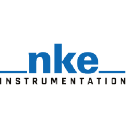 NKE, the Breton specialist in aquatic analysis, acquires British company Aquaread - 06/10/2023
NKE, the Breton specialist in aquatic analysis, acquires British company Aquaread - 06/10/2023
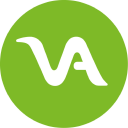 Valgo to extract perfluorinated pollutants - 30/08/2023
Valgo to extract perfluorinated pollutants - 30/08/2023
